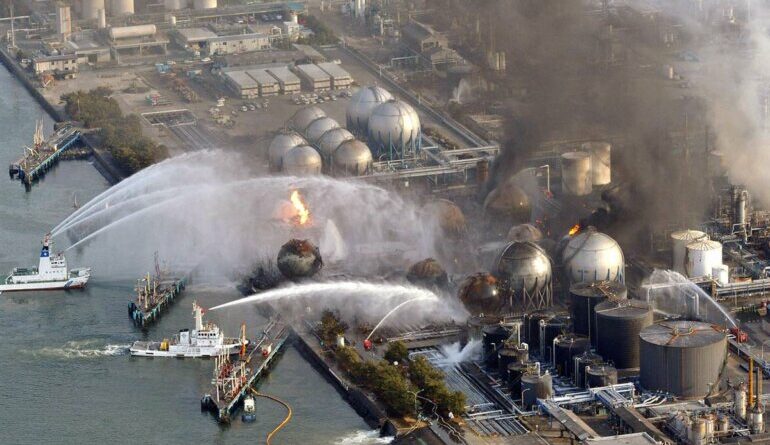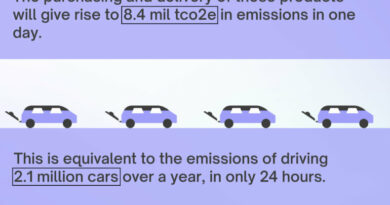Nuclear Safety – Lessons Learnt from the Fukushima Nuclear Disaster
Insights by Brandon Scholtz from Aon South Africa’s Risk Consulting Division
On Friday 11 March 2011, a magnitude 9.0 earthquake struck just off the East coast of Japan, causing a tsunami that claimed thousands of lives. The 15-metre wave that washed over Ōkuma hit the Fukushima Daiichi Nuclear Powerplant, disabling the power supply and the cooling of three of the six Fukushima Daiichi reactors. The quake would lead to one of the worst nuclear disasters in modern history.
- All three nuclear cores of Fukushima Daiichi reactors 1, 2 & 3 melted within the first three days of the tsunami.
- The state of Reactor 4 became highly precarious on day 5 following the event.
- High radioactive exposure took place over days 4 to 6, eventually a total of some 940 PBq (I-131 eq) – the accident was rated level 7 on the International Nuclear and Radiological Event Scale.
- The Fukushima region issued an evacuation of everyone within a 20km radius of the power plant.
- A ‘cold shutdown’ of the nuclear reactors was declared in mid-December 2011, bringing the accident phase of the event to a close.
What Went Wrong
Amongst other lesser contributing factors that combined to create the perfect storm, it is pertinent to examine ‘what went right’. Findings revealed that the Fukushima Daiichi nuclear reactors were in fact seismically robust per their design and the earthquake did not cause any structural damage to the powerplant. The reactors automatically shut down according to their safety design. Ironically, it was a lack of power supply to the reactors as a result of the tsunami, that proved to be its undoing.
The nuclear reactors were designed to be cooled by a constant flow of sea water, hence its location so close to the shore only ten metres above sea level. The main power supply to the reactors was lost due to damage from the earthquake and the reactors switched to emergency power supplied by diesel generators located in the basement of the reactor buildings. Up to this point, everything was playing out perfectly.
But when the 15-metre tsunami wave hit the power station 41 minutes after the earthquake took place, followed by a second smaller wave eight minutes later, the generators and water pumps located in the basement of the reactors were flooded and damaged, leaving the power station powerless with no way to cool the turbines.
Roads and infrastructure around Fukushima were severely damaged as a result of the natural disaster, limiting access to the nuclear power plant and adding another obstacle to the Fukushima Daiichi Nuclear Powerplant’s emergency response plans.
The Cost of Ignoring Risk Data in Safety Precautions
- When design of the Fukushima Daiichi Nuclear Powerplant was commissioned in the 1960’s the acceptable safety measures incorporated at the time were breakwaters around the plant (North, South and East) that were designed to withstand a tsunami wave of 5,7 metres, considered an industry standard at the time.
- Around 18 years prior to the 2011 disaster, scientific knowledge emerged to show that an earthquake in the Fukushima region could result in a major tsunami that could potentially create a wave 15.7 metres in height. No action was, however, taken.
- The Earthquake Research Committee of the Japanese government was working on an earthquakes and tsunamis report off the Pacific coastline of North-Eastern Japan, which was due for release in April 2011, that could have finally spurred the team into action to put the necessary precautions in place.
- Moving the backup generators to higher ground, sealing the lower part of the buildings and having back-up seawater pumps are some of the countermeasures that could have been incorporated at Fukushima.
Why Safety Matters
Using the Civil Aviation Authority (CAA) as an example: Every aircraft accident and each near miss is thoroughly interrogated by the CAA to underpin improvements by all involved, including manufacturers, designers, airport controllers and such. With every accident or incident, the safety requirements become more robust and stringent to prevent history from repeating itself by mitigating the extent of future similar incidents.
The Fukushima disaster serves as an example of why it is important to take natural disasters into account when it comes to the design and functionality of a structure, such as an office block, a powerplant or an airport. More critically, constant review and updating of safety measures must be undertaken in line with changing circumstances and scientific evidence. While the tsunami countermeasures taken when Fukushima Daiichi was designed and sited in the 1960s were acceptable in relation to the scientific knowledge then, the reality is that some 18 years before the 2011 disaster, new scientific knowledge had emerged about the likelihood of a large earthquake and resulting major tsunami of some 15.7 metres at the Daiichi site. However, this had not yet led to any major action by either the plant operator, Tepco, or government regulators, notably the Nuclear & Industrial Safety Agency (NISA).
How is this relative? lets take South Africa with its many energy and water crisis issues, where many an individual, company and or conglomerate have taken to becoming less reliant on state supplies for these essential utilities and have created their own, to varying degrees of self-efficiency, energy and water reserves. We are technically in unchartered territory, as is the rest of the world, as we come to grips with changes in dynamics and the associated risks, when responding to protecting our environment, to seeking alternate means of power and water to survive.
Design changes are often driven by budget constraints, and while improvement in design go hand-in-hand with the adoption of newer building methods and styles that are easy on the pocket and kinder to the environment, this should be executed without compromising on safety and precautionary measures.
The insights and expertise of a specialist risk advisor, backed by powerful data and analytics capabilities are invaluable in identifying every possible scenario that could come to bear. Informed risk scenarios based on the latest scientific data and scenarios are key in ensuring that the final construction is built for purpose, with a risk averse design that is engineered to withstand a worst-case scenario.




